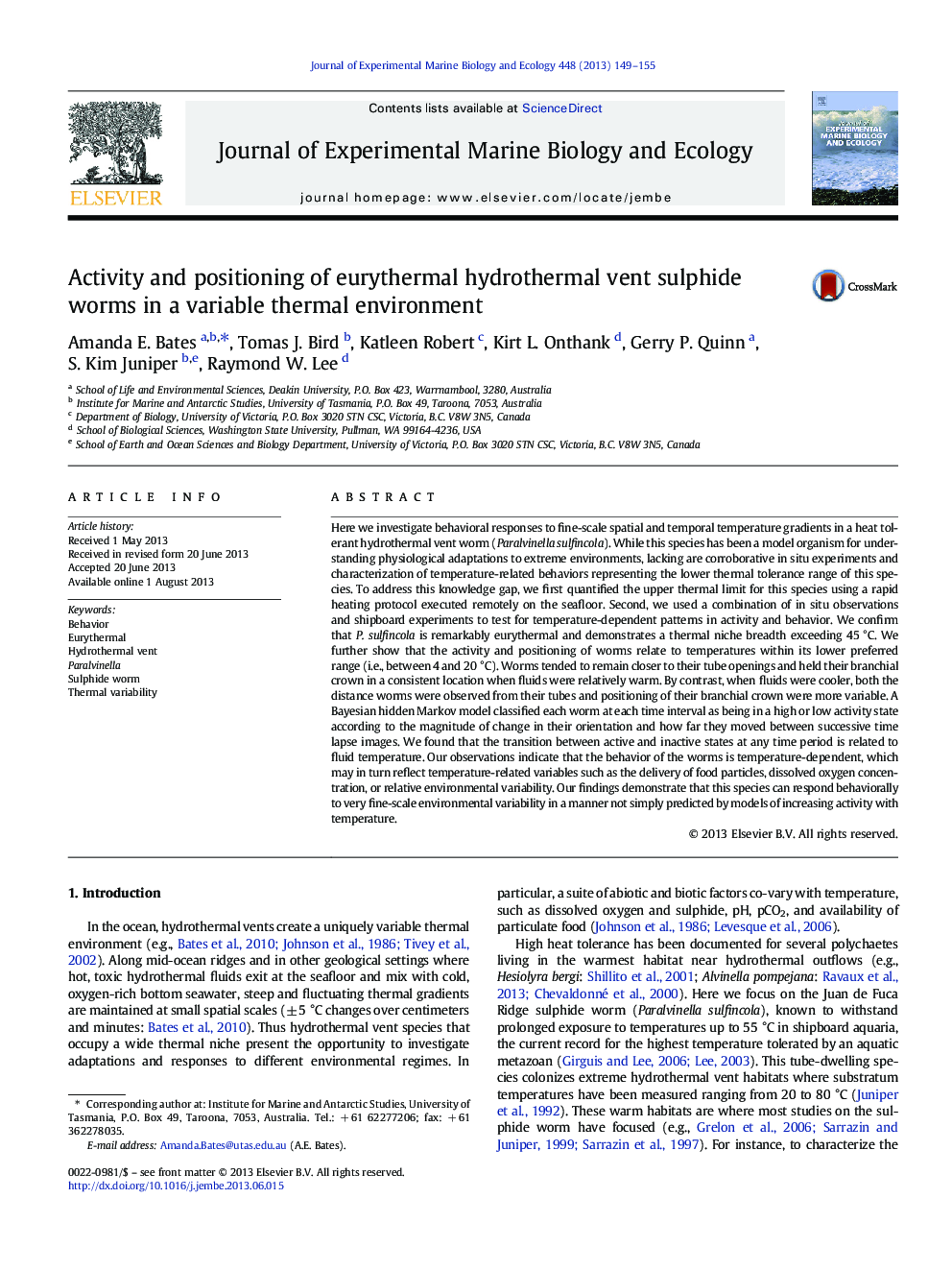| کد مقاله | کد نشریه | سال انتشار | مقاله انگلیسی | نسخه تمام متن |
|---|---|---|---|---|
| 6304372 | 1618427 | 2013 | 7 صفحه PDF | دانلود رایگان |
- A novel seafloor chamber confirms the remarkable heat tolerance of the sulphide worm.
- In spite of high heat tolerance, worms are also active in frigid deep-sea water.
- This species is remarkably eurythermal with a thermal niche breadth exceeding 45 °C.
- Sulphide worm activity is not a simple positive relationship with temperature.
- Worms in cooler fluids transitioned to inactive states with increasing temperature.
Here we investigate behavioral responses to fine-scale spatial and temporal temperature gradients in a heat tolerant hydrothermal vent worm (Paralvinella sulfincola). While this species has been a model organism for understanding physiological adaptations to extreme environments, lacking are corroborative in situ experiments and characterization of temperature-related behaviors representing the lower thermal tolerance range of this species. To address this knowledge gap, we first quantified the upper thermal limit for this species using a rapid heating protocol executed remotely on the seafloor. Second, we used a combination of in situ observations and shipboard experiments to test for temperature-dependent patterns in activity and behavior. We confirm that P. sulfincola is remarkably eurythermal and demonstrates a thermal niche breadth exceeding 45 °C. We further show that the activity and positioning of worms relate to temperatures within its lower preferred range (i.e., between 4 and 20 °C). Worms tended to remain closer to their tube openings and held their branchial crown in a consistent location when fluids were relatively warm. By contrast, when fluids were cooler, both the distance worms were observed from their tubes and positioning of their branchial crown were more variable. A Bayesian hidden Markov model classified each worm at each time interval as being in a high or low activity state according to the magnitude of change in their orientation and how far they moved between successive time lapse images. We found that the transition between active and inactive states at any time period is related to fluid temperature. Our observations indicate that the behavior of the worms is temperature-dependent, which may in turn reflect temperature-related variables such as the delivery of food particles, dissolved oxygen concentration, or relative environmental variability. Our findings demonstrate that this species can respond behaviorally to very fine-scale environmental variability in a manner not simply predicted by models of increasing activity with temperature.
Journal: Journal of Experimental Marine Biology and Ecology - Volume 448, October 2013, Pages 149-155
